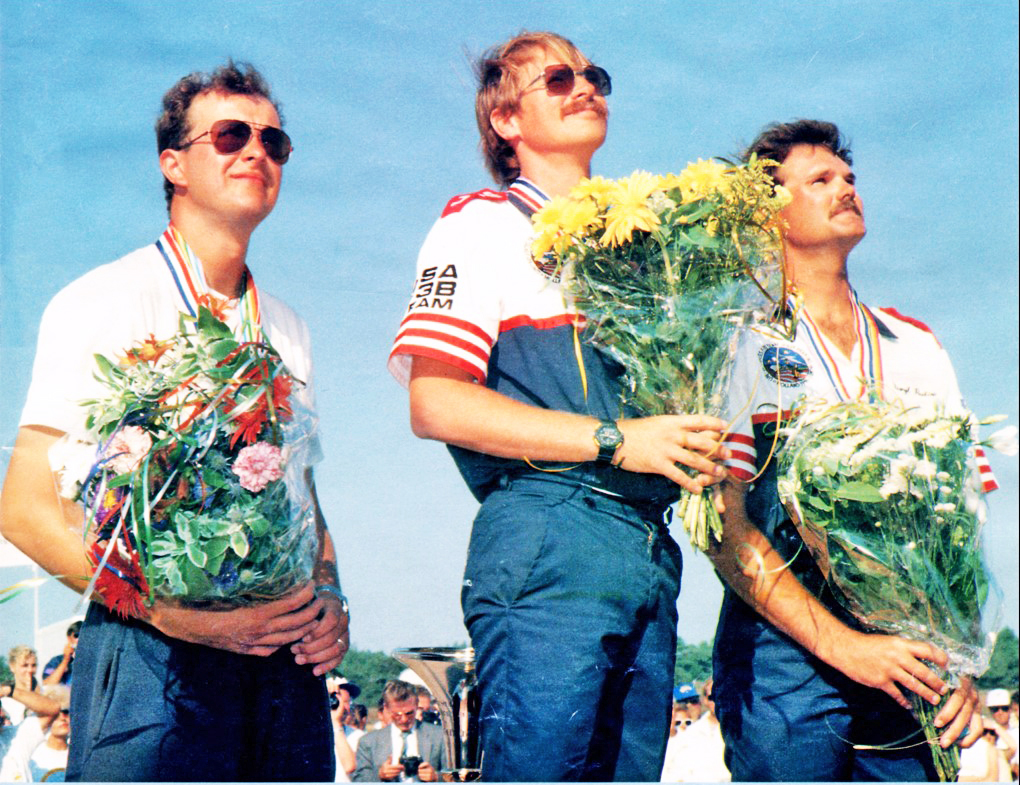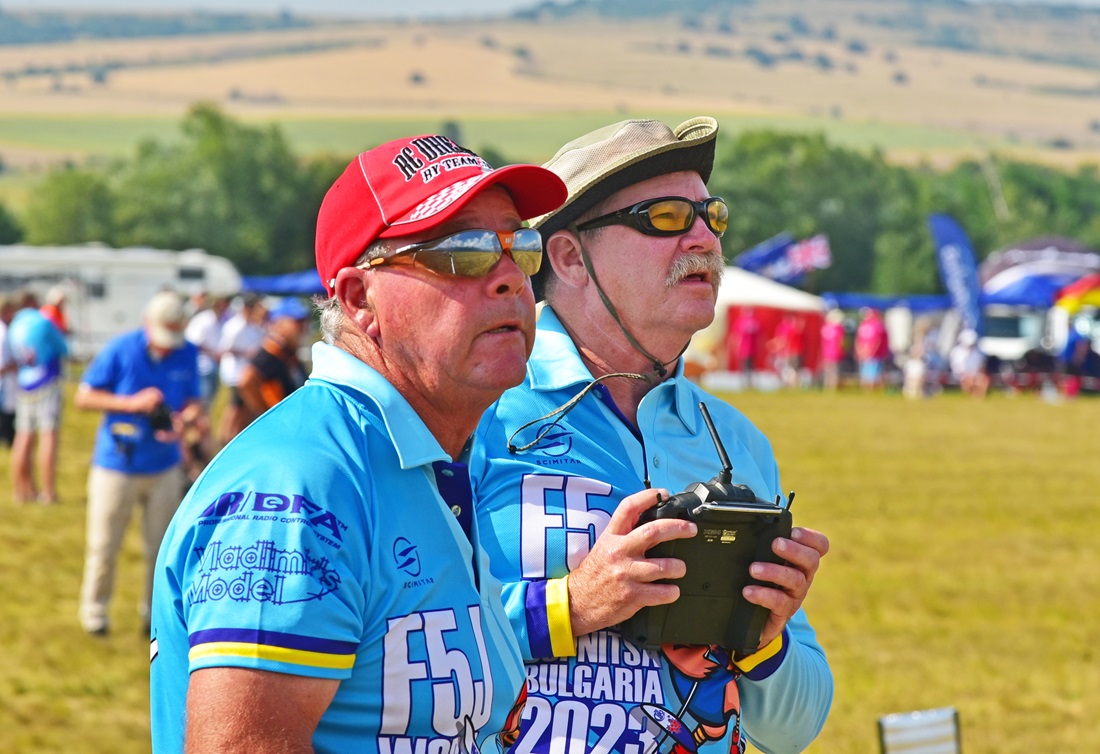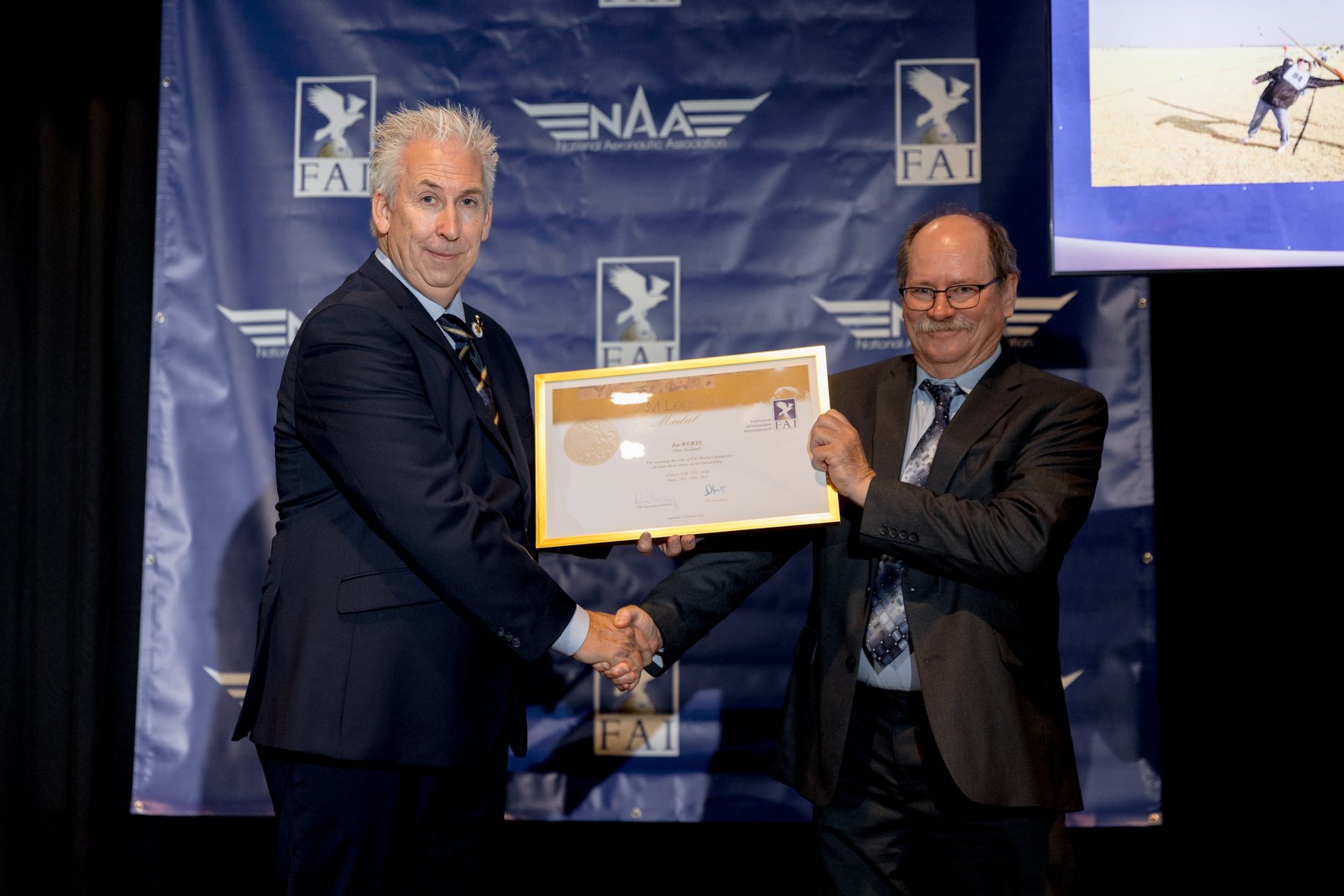Soaring to success: CIAM Legend Joe Wurts on his career so far
The striking thing about Joe Wurts’ aeromodelling career is that it began all alone. No-one to advise him on launch technique, no-one to help him understand how to read the thermals. This determined adolescent identified the cause of each crash, working out the solutions for himself.
Fast forward a few decades and since those early days of charging up and down slopes, this self-taught RC soaring pilot has become something of a legend. Not only to the FAI Aeromodelling Commission, where he was awarded the CIAM Legends Medal in 2023 for his three World Champion titles, but also among the F3 soaring world as a whole. His self-deprecating, avuncular demeanour and his willingness to help others has cemented many friendships around the globe, also helping make his adopted home of New Zealand a player on the aeromodelling scene.
This busy gent also makes a significant commitment to civil aviation! A frequent flyer, he travels regularly to participate in international events, but how has his competition career impacted his work-life balance? Joe kindly took some time out to share his reflections:
Joe, how did you get started in aeromodelling as a hobby, and how did you progress to competing at National and International levels?
As long as I can remember, I have been fascinated by aircraft. When I was very young, I experimented with free flight and control line models, but was most attracted to all things soaring.
At the age of fourteen I started saving up, and a year later I was able to buy a used two channel radio control. I spent a year learning how to fly, learning by myself via launching the plane from a top of a hill and flying down to the bottom of the hill, and usually crashing instead of landing. It took a summer of flying until I caught my first thermal. It turned out that I was less than a half hour drive away from a soaring club that had many pilots that competed at national and international levels, the San Fernando Valley Silent Flyers. I joined the club and started flying with them.
Around then, I started designing and building my own creations. I was rather lucky in that shortly after I turned sixteen and got my driver’s license, the US Nationals was held just a few hours’ drive away. My first big contest! I ended up coming in 2nd place with my own design airplane. It was neat to meet many legends in the sport.
The next decade had me continuing flying, and building my own designs while going to university studying aeronautical engineering. It was a busy time as I worked full time to pay my own way through university. I was lucky to get funded by NASA for my Masters degree. I did my Masters thesis on integrating and validating an aerodynamics package into an aircraft design synthesis program for NASA.
After graduating and working for a few years, I finally had enough funds and time to get serious about international events, and geared up to try out for the US F3B team for the 1991 world championship. This effort started back in 1989, and Daryl Perkins and I were the new kids on the block. We pushed each other to learn, and became great mates in the process. In 1990, we made the US team, along with Larry Jolly, and Daryl and I went on to finish 1st and second at our very first world championships!

Joe Wurts on the podium in 1992. Cover for Model Aviation magazine.
How nervous were you when competing in your first World Championship and how does that compare to the most recent event?
This is an interesting question. There may be some nervous anticipation involved, but once it is time to fly, all that goes away. I tend to be “in the moment” when I am actively competing, fully concentrating on how to get the best result. When it is time to fly, the nerves just go away.
It helps to have a strong belief in one’s capabilities. Now that I am getting to being a pensioner, the nerves are becoming annoying as I know that my capabilities are not what they used to be. The spirit is still willing though!
You have won the title of World Champion three times, and will therefore receive the new “CIAM Legends Medal” in 2023, but it won’t be your first FAI medal. Can you tell us about your other medals/awards, and what do they mean to you?
One of my more meaningful achievements was setting the F3 Open radio control soaring distance to a goal FAI world record in 1988. At that time, the record was 146 km. On my second attempt I made it to my declared goal of 226 km. That record was only beaten in 2016. Just a few months ago I made my first world record cross country attempt since I set the record in the ‘80s. I made it 352 km, but missed my target of 365 km. So close!
I am particularly proud of the longevity of my soaring career, as well as the breadth of it. I’ve been on World Championship podiums 26 times in four different classes, F3B, F3J, F3K, and F5J, starting in 1991 and continuing to the present 2023. Never in my wildest dreams could I have hoped for such a sustained period of success.
I was also proud of becoming world champion the first time I flew in a new event, getting the world champion gold medal on my first time for F3B, F3J, and F3K. The latter one was special in that hand launch was my favourite soaring event (excepting cross country) due to its emphasis on air reading skills. It was also special in that I became F3K world champion at the age of 50 in a class that emphasizes physical abilities which favours younger fliers.
I am also quite proud of how New Zealand has become a strong force on the international soaring scene. Back in 1994, I was invited to come down to New Zealand to do lectures and on field seminars for the soaring pilots around the country. They appeared to appreciate it, and I was invited to return in 1997 and once again in 1999. Something clicked between New Zealand and myself and my wife Janet, and we eventually emigrated to New Zealand in 2007.
In 2008 I was the team manager for the NZ F3J team, and the team made it onto the podium with a bronze medal. The first ever NZ aeromodelling world championship medal! Since then, NZ has been on the podium for soaring world championships 11 times including 2 individual gold medals and 5 team gold medals. Before my arrival New Zealand had never made it to a podium in any soaring class at a world championship.
You have had your success in soaring classes, but do you fly any other kind of models for fun?
I have a few electric fun fly aircraft, although these do not get a lot of use. I tend to fly almost purely soaring related aircraft. I fly the full range, F3B, F3F, F3H, F3J, F3K, F3L, and F5J. I also still get out and have fun sport flying on the slopes along with dynamic soaring as well.
After so many international competitions and also your world record, is there anything left to tick off your list of aeromodelling ambitions?
My ambitions have been more than fully achieved for a rather long time. My goal is to continue to have fun, flying with others that share the same passions as I do. More than two decades ago, I started to try and give back to the soaring community via trying to impart what I have learned over many decades. I have given many soaring seminars all around the world over the past few decades.

Joe Wurts (right) competing in the FAI F5J World Championships for Electric Powered Thermal Duration Gliders in Bulgaria, 2023.
Image (and header image): Antonis Papadopoulos, CIAM
Has your involvement with aeromodelling helped you in your professional career?
Yes! My experience in aeromodelling helped immensely in my professional career.
Even when studying aeronautical engineering, I had a huge advantage over the other students in that I already knew the basics from my childhood aeromodelling experiences. I knew what controls did, had very good understanding of just what static and dynamic stability means to how an airplane flies etc. I had done a lot of analysis tools development at home for designing model aircraft.
Just over a decade into my career, I started working on some small UAVs, and ended up bringing some of my homegrown tools into work to do the aerodynamic design and analysis. It was interesting in that on a couple proposals we submitted to customers, my competition successes were listed alongside my engineering capabilities!
It was only in the latter stages of my career where there was some pushback from the company in regards to the large amount of time I was taking off to attend competition events around the world. In two decades of work, I averaged taking 4.5 weeks per year of leave without pay. I used leave without pay to attend events so that I could use the vacation time to still have vacations with my wife. It is good to have a semblance of balance between work, life, and one’s avocation!
Do you have any advice for young people going into aeromodelling, and specifically competing?
This is a challenging question to answer, especially from a somewhat advanced age perspective! It is important to learn from others’ experiences. One can learn so much more quickly if one has a mentor. Join a local club, and do not be afraid to ask questions. Everyone wants to help new and curious young fliers.
As an aside, competition is only one aspect of aeromodelling, and for some, the joy is in the process of learning aeromodelling. For others, participating in competition is important. Find which aspects are most important for you, and then pursue those aspects.

Joe Wurts is awarded the CIAM Legends medal at the 2023 FAI Awards Ceremony in Dayton, Ohio, USA.
Image: NAA/www.knackvideophoto.com

